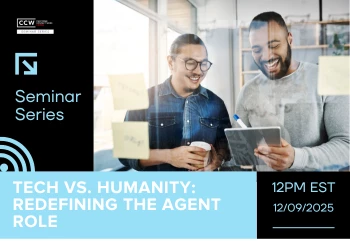6 Things that Scare Call Center Leaders
Add bookmarkForget about witches, ghosts and goblins – here are some things that are really scary if you manage a contact center:
Rampant agent turnover
It’s positively frightening to think that the average contact center has an annual turnover rate of nearly 40%, and that, according to the human capital management firm CallMe! (that really is their name), the average turnover cost per agent is upwards of $4,000. This means that in a typical 100-seat contact center, agent turnover costs roughly $160,000 – every year. Evidently many organizations are so paralyzed by fear of such exorbitant figures, they are physically unable to create the kind of positive culture that would cause said figures to plummet.
Disengaged agents interacting with your customers
Even scarier than agents leaving are agents who stick around – but who couldn’t care less about your company or its customers. Just because agents show up and sit at their workstations everyday doesn’t mean they are truly present, and THAT can cost you even more than actual turnover. When agents aren’t engaged, empowered and focused on the job, the unnecessary callbacks, long caller rants and customer defection could end up forcing your center to implement a 100% work-at-home initiative – because your company soon won’t be able to make rent.
Managing Millennials
Millennials tend to be highly creative and tech-savvy multi-taskers who enjoy working in a collaborative manner. Nothing actually scary about that – unless you are a contact center manager or supervisor who only knows how to lead and develop people whose learning styles and communication preferences are just like yours. If that’s the case, your attempts to engage the typical Millennial will be a horror show featuring a lot of carnage – or at least a lot of burnout and attrition.
Social customer service
Just when you thought you had a handle on all the channels and that it was safe to go back into the contact center, social customer service entered the scene – bringing with it a new kind of terror. Now your center has to respond not only to customers who contact you directly (via phone, email and chat), but also to those who express their issue and mention your company name via Twitter or Facebook. And if you don’t respond to the latter customers – or if you respond in an unsatisfactory manner, everybody and their mother gets to see as the PR nightmare plays out.
Big data
The vast amount of customer information today’s contact center is able to capture is amazing – and scary as all get-out if the center doesn’t have a way of structuring, analyzing and strategically acting on the data. If you thought finding time to monitor each agent a few times a month was hard, try finding time to make sense of the millions of pieces of customer intelligence flying around the contact center stratosphere. Fortunately, there have been real advances in interaction analytics and data-mining to help centers slay the big bad data monster, but many customer care organizations have yet to invest in or tap the full power of said technologies, and thus must continuously face the fear of being swallowed up whole.
The power of the home agent model
This one may seem a bit out of place, but the power of the home agent model is scary. What else do you know of that, once implemented, has the power to vastly improve such critical things as: agent engagement and retention; agent performance and attendance; contact center staffing/scheduling flexibility; facility expenses; disaster recovery; and the environment? It’s natural to be in awe of such power, even a little frightened. But what’s REALLY scary is the fact that not every customer care organization has embraced the home agent model despite all the huge proven benefits. I guess they are deathly afraid of success – or of happy agents.










